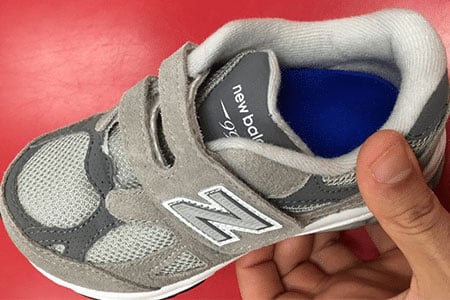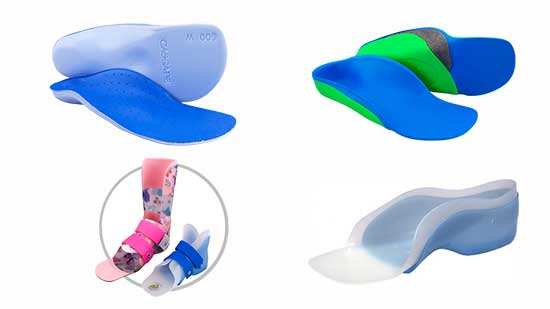How to Fit Orthotics in Shoes – Learn the Most Effective Method Here!

Has your child been diagnosed with flat feet, overpronation, or rolled ankles? Has your physical or occupational therapist recommended that your child wears a pair of orthotics inside the shoes? Let me show you the most effective way of how to fit orthotics in shoes.
There are only a few shoes that are compatible with your children’s orthotics and if you don’t choose the correct type of shoe you will decrease the efficiency of the orthotics. The shoes are the ones that connect the orthotic to the ground and if the shoe doesn’t offer the correct type of structure and support, the orthotics will not benefit your child as they are intended.
If you already have the correct type of shoes and orthotics, let me show you which steps you need to take to make sure your child’s orthotics are fitting correctly inside your kids’ shoes.
How to Fit Orthotics in Shoes – Follow These 4 Simple Steps
1️⃣ First Step: Remove the Original Insoles
The first step before you fit the orthotics inside the shoe is to remove the original insoles of the shoes:
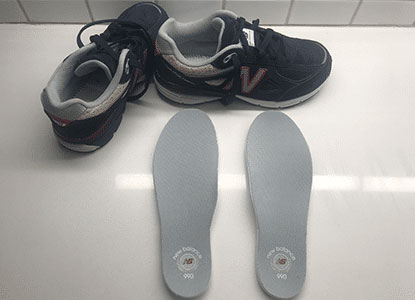
This is a very important step because if you leave the original insoles inside the shoes you will end up raising your kids’ feet and they might rub against the top of the shoe. This will lead to discomfort as well as foot issues such as blisters, calluses, and corns.
2️⃣ Second Step: Make Sure the Orthotic Length Matches the Insole Length
The second step is to check if the length of the orthotic matches perfectly with the length of the shoe. If the orthotic is too large, you can trim the orthotic at the “toe end” with a pair of scissors. I always recommend using the existing insole of the shoe as a template.
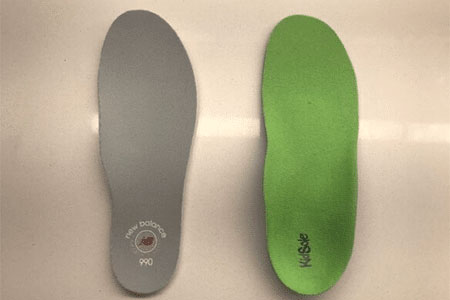
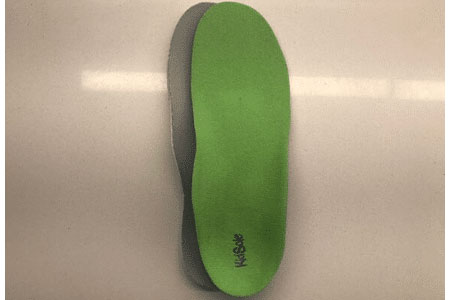
3️⃣ Third Step: Open the Shoe Widely
The third step is to open the shoe widely to get it ready to insert the orthotic inside the shoe. The wider the shoe opens up the better, as it will make the whole process of inserting the orthotic inside the shoes less time-consuming. Take a look at the picture below for clarification:

4️⃣ Fourth Step: Place the Orthotic Inside Your Kids’ Shoes
The fourth and final step is to insert the orthotic inside the shoe and make sure that it’s sitting properly inside the shoe. Start by sliding your hand into the front of your kids’ shoe and feel the length and width of the orthotic in comparison to the shoe. The orthotic should lie flat on the base of your kids’ shoe and not tilt up either side or bunch up inside the shoe.
Check if the orthotic is sitting properly inside of the shoe and not bunching up. Let me show you the difference between an orthotic that is fitting properly inside the shoes and one that doesn’t. Do you notice how the orthotic is fitting a lot deeper in the New Balance sneaker (image on the bottom) compared to the Saucony sneaker (top image)?
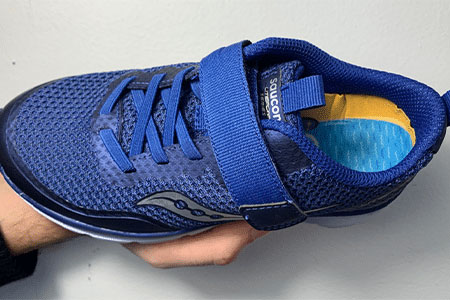

If you follow these 4 easy steps you will be able to fit the orthotic inside your kids’ shoes easily!
What Shoes Work Best for Orthotics?
Certain orthotics take more space than others, as some will have a lower profile while some will be thick and take up a lot of space inside the shoe. This is the main reason why shoes are available in different widths such as medium (M), wide (W), and extra wide (XW).
In my experience, most of the time a child needs a pair of orthotics to be fitted inside the shoes I end up needing a wide or an extra wide shoe. Certain shoes have wider toe boxes than others, and I have learned this from actually having fitted the shoes before.
My go-to shoes for orthotics feature these 2 important features:
1️⃣ Extra Depth: Shoes that provide extra depth allow the orthotic to fit deeply inside the shoes and help prevent the top part of your child’s feet (instep) from rubbing against the top part of the shoes.
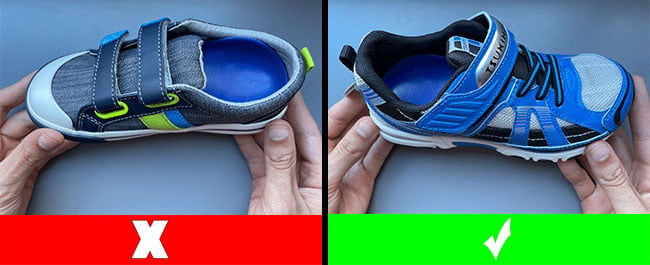
2️⃣ Rounder Toe-Boxes: Shoes with rounder toe-boxes help prevent the orthotic from poking a hole against the side or front part of the shoes.

Never buy larger shoes to accommodate the orthotic inside the shoes, as this will only end up compromising your child’s stability and leading to foot issues.
Unsure Whether Your Child Is Wearing the Correct Shoes with the Orthotics?
Here you can find a list of deep and supportive shoes for orthotics.
If your child starts complaining that the orthotic is making his or her heels slip in the shoes, please do not feel that you need to buy a smaller shoe size. If you chose a shoe that comes with shoelaces – this is what I recommend over velcro closure, there are a variety of different lacing techniques that will help minimize heel slippage and make your kids’ shoes and the orthotics fit and feel entirely much better.
Are Any Other Shoe Choices Available?
If there is a particular shoe style that you have been trying to fit your children’s orthotic but can’t seem to make it work, please don’t hesitate to contact me and I will help you find a workaround or another shoe style that will actually fit the orthotics:

